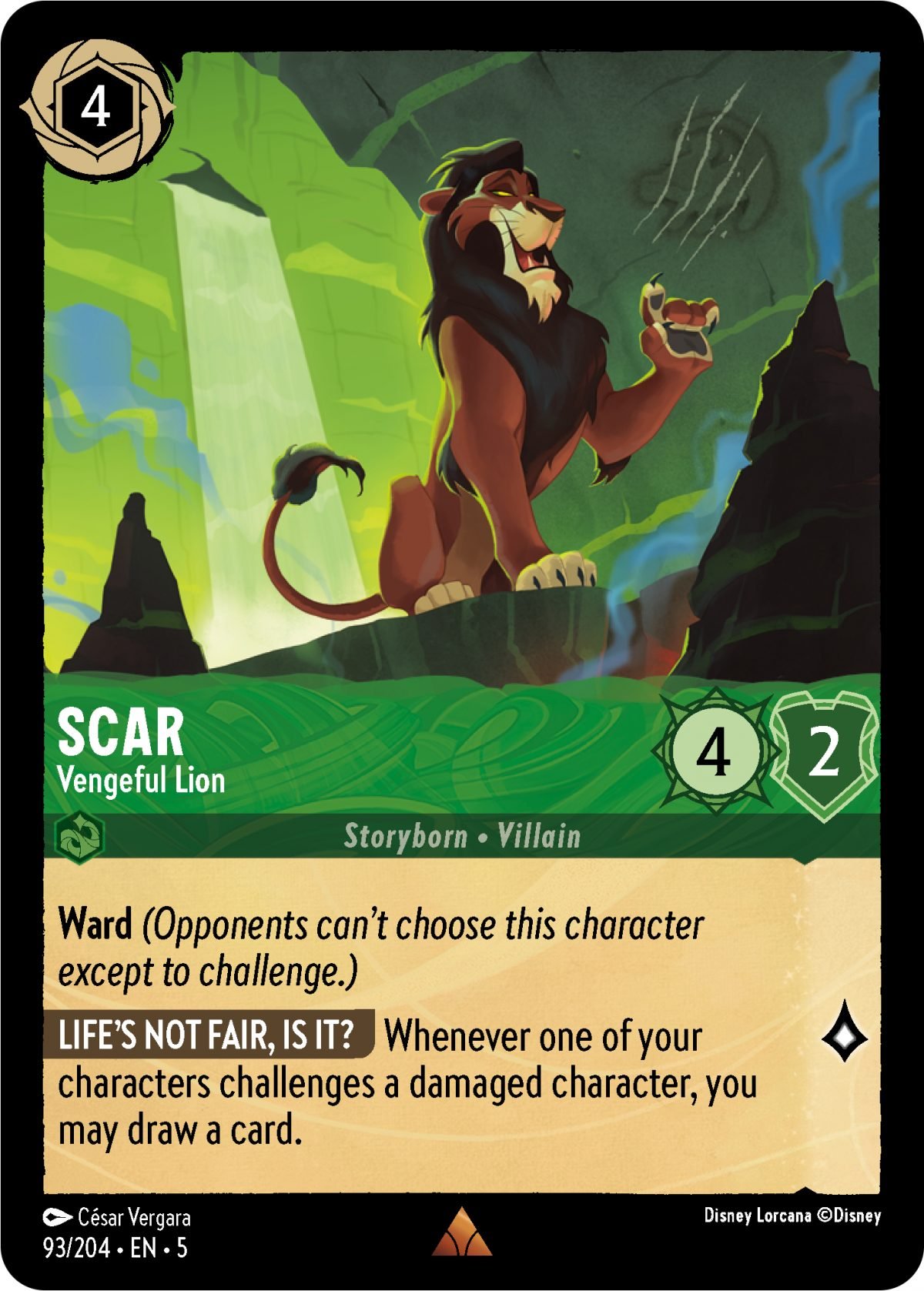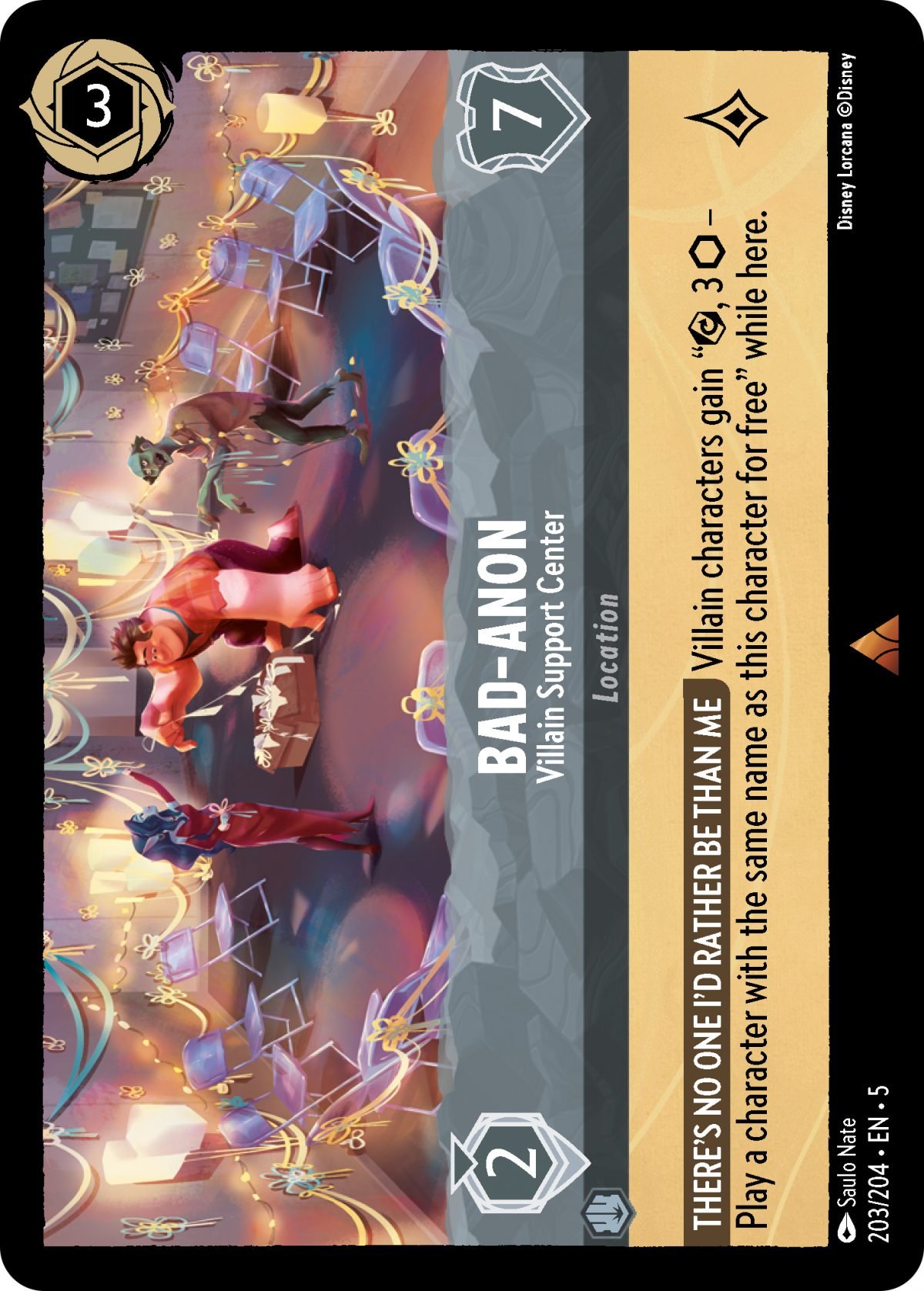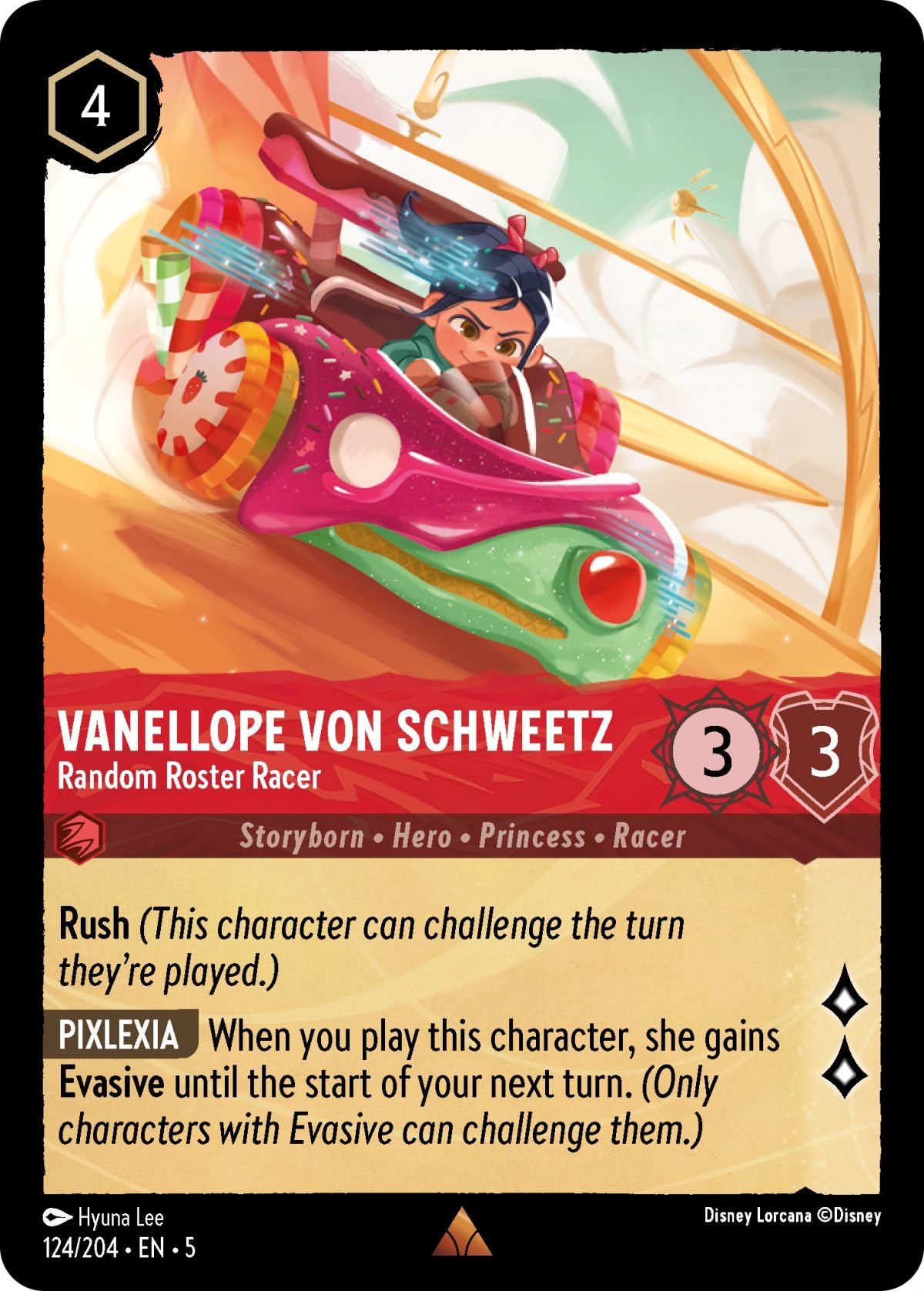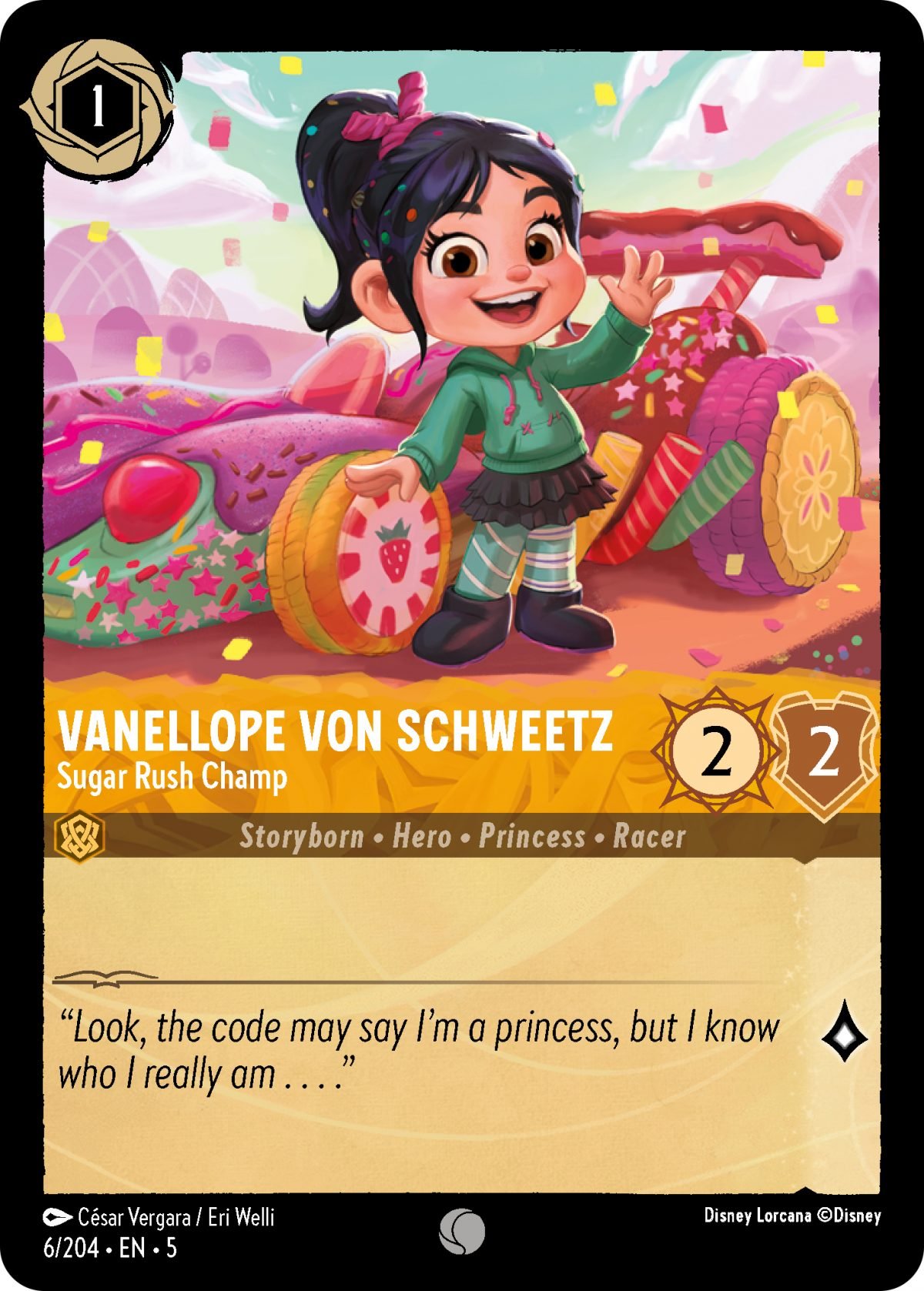Disney Lorcana is a game that has only continued to pick up speed and fan love. And without anyone realizing it, the release of Disney Lorcana‘s fifth set is here. Ravensburger has announced the next set of Disney Lorcana cards will be called Shimmering Skies and has given us a brand new look at what’s in store. Here’s everything we know about this magical fifth set, Disney Lorcana: Shimmering Skies.
Title
As mentioned, the fifth set of Disney Lorcana cards is called Disney Lorcana: Shimmering Skies.
Disney Lorcana: Shimmering Skies’ Story
Disney Lorcana‘s fifth release will continue the story told in the first four sets of cards. A release shares, “The realm of Lorcana holds a great festival to celebrate its recent victory over Ursula, which concluded the previous set, Ursula’s Return, filling the realm with fun and revelry. During the celebration, a new mystery begins to unfold as parts of the Great Illuminary fall off, crashing down around the crowd.”
Uh-oh, what could that mean for Disney Lorcana? We’ll just have to play Shimmering Skies and find out.
Disney Lorcana: Shimmering Skies‘ New Franchise and Characters

One of the most exciting parts of Disney Lorcana is the gorgeous new renditions of familiar and beloved Disney characters. Disney Lorcana: Shimmering Skies will bring Disney’s Wreck-It Ralph into the mix. A release notes, this Disney franchise will join “Lorcana in a substantial way and is the franchise’s first appearance since Ralph appeared on the Pick a Fight action card in Rise of the Floodborn.” That’s very exciting for fans of this particular Disney adventure. New Wreck It-Ralph characters coming to Disney Lorcana: Shimmering Skies include “Wreck-It Ralph, Vanellope Von Schweetz, King Candy, Fix-It Felix, Jr” Additionally, Elemental spirits from Frozen 2, including Bruni and Gale, will join in the Disney Lorcana fun.











A release additionally shares, “Shimmering Skies features Disney’s Wreck-It Ralph with the introduction of Disney characters like Vanellope Von Schweetz and Fix-it Felix, Jr. In addition, players can anticipate new gameplay mechanics with an evolved story with gorgeous art – all of which is infused with electric energy that amplifies both the celebration and the gameplay. More details on mechanics and other cards will be unveiled closer to availability. All cards in this set can be used to update existing Disney Lorcana TCG decks or played alongside the previously released sets, The First Chapter, Rise of the Floodborn, Into the Inklands, and Ursula’s Return.”
What Disney Lorcana: Shimmering Skies Will Include

The Disney Lorcana: Shimmering Skies release will include the following
- Two Starter Decks
- Amethyst and Ruby (Elsa and Wreck-It Ralph)
- Emerald and Steel (Scar and Kronk)
- Illumineer’s Trove
- Contains: (8) booster packs, lore counter, card dividers and new shimmering dice
- Two new Deck Sleeves and Boxes
- Featured glimmers are fan favorites from sets 1 and 2
- Tiana – Celebrating Princess
- Aladdin – Heroic Outlaw
- Featured glimmers are fan favorites from sets 1 and 2
- Two New Portfolios
- Back of card artwork (Front and back)
- Six glimmers by artist Nicholas Kole across the front and back
Disney Lorcana: Shimmering Skies Release Date
Disney Lorcana will be released at local game stores, Disney Stores, and Disney Parks on August 9, 2024. Shimmering Skies will then be released by mass market retailers and DisneyStore.com on August 23, 2024.
A Disney Lorcana and Disney VIllainous: Introduction to Evil Crossover

Disney Lorcana: Shimmering Skies and Disney Villainous: Introduction to Evil will be having a crossover this summer. An exclusive, alternate-art, foil version of the Disney Lorcana: Shimmering Skies card, Prince John – Gold Lover, will be available in new, stickered, and limited copies of Disney Villainous: Introduction to Evil board game. This limited-edition Disney Lorcana card will be illustrated in the art style of Disney Villainous.

